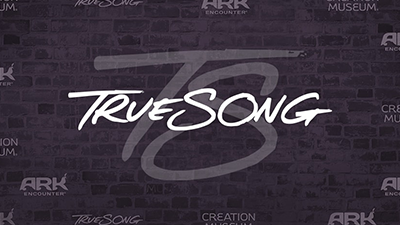Naledi Nailed Down as a Human-Like Species?
Creation Museum Comments on Latest Evolution Claim
Editor’s note: This article was adapted from a news release that was recently distributed to the media.
Evolution researchers declared yesterday that they have discovered a new human-like species, based on their interpretation of hundreds of bones found in a South African cave.
As staff scientists with Answers in Genesis (AiG) and its Creation Museum pore over the research papers and prepare to post a web article on Saturday about Homo naledi, they have a few preliminary comments to offer about the nature of the find that is now at the top of the world’s news. Yesterday’s news article about the find from the Associated Press, under its web banner “The Big Story,” is instructive concerning the many doubts surrounding the find.
Not only were researchers, reports the AP, “unable to determine an age for the fossils” and that they “are not claiming that naledi was a direct ancestor of modern-day people,” the use of tentative words in the reporting like “evidently,” “suggest,” “may be,” “his guess is,” “around,” “mysteries,” etc., exposes just how little is known and how the bones are subject to interpretation.
Dr. David Menton (PhD, Brown University, cell biology) of the Creation Museum states, “I am not convinced that H. naledi is human, and I don’t recognize the status of ‘near human.’” He adds,
From what I can see from the fossils and skull reconstruction, H. naledi had a sloped lower face and a very robust mandible that bears little resemblance to humans. It also has a small cranium. The proximal and medial phalanges of the hand are even more curved than A. afarensis, suggesting an ape-like creature.
Dr. Menton is a longtime researcher of the so-called “ape-men,” and was the scientist behind the well-known Creation Museum exhibit that debunks “Lucy,” one of the African fossils thought to be in the line leading from apes to humans. Note: the evolutionists who announced the H. naledi find are not stating that it is a direct ancestor of modern humans, but is on a branch of the human family tree.
The evolutionist community is not in full agreement about the bones. The AP cited Dr. Tim White of the University of California-Berkeley who questions the researchers’ conclusion: "From what is presented here, [the fossils] belong to a primitive Homo erectus, a species named in the 1800s.” While the Creation Museum even disagrees with White’s assessment, the disagreement among evolutionists underscores their uncertainty about H. naledi. Furthermore, the AP article also quoted the director of the human origins program at the Smithsonian Institution’s Natural History Museum, Dr. Rick Potts, who stated that without a date associated with the bones, “there’s no way we can judge the evolutionary significance of this find.”
A detailed web article on H. naledi will be posted tomorrow at AnswersInGenesis.org.
AiG is an apologetics (i.e., Christianity-defending) organization. Its Creation Museum has been visited by 2.5 million guests since opening in 2007. Last year the museum unveiled a world-class $1.5 million exhibit of an allosaur dinosaur skeleton, and hosted the famous Bill Nye/Ken Ham evolution-creation debate (conservatively estimated to have now been watched by upwards of 15 million people). AiG’s life-size Noah’s Ark will open late next summer in Williamstown, Kentucky.
Recommended Resources

Answers in Genesis is an apologetics ministry, dedicated to helping Christians defend their faith and proclaim the good news of Jesus Christ.
- Customer Service 800.778.3390
- Available Monday–Friday | 9 AM–5 PM ET
- © 2025 Answers in Genesis





